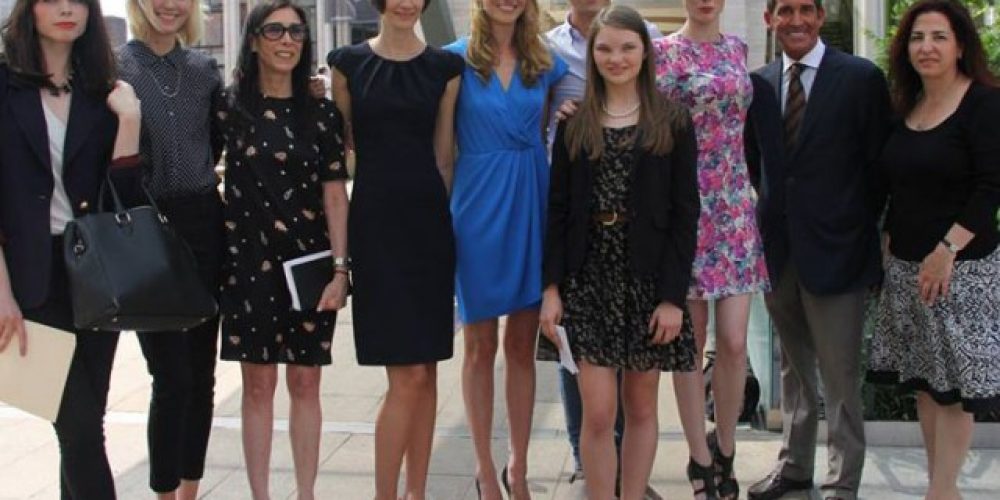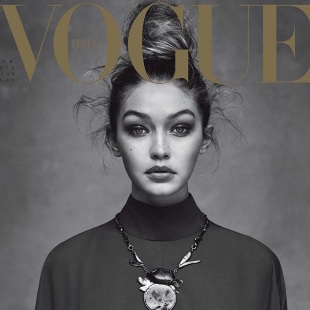When model Coco Rocha shoots an ad campaign, it’s often split into two parts — print photographs and video. If a performer under the age of 18 is on set, she sees a drastic difference from one shoot to the next. “When we’re doing a commercial, the crew changes completely,” she said. “There is a nurse, there is a tutor” — a whole team assembles to watch over that adolescent performer, as mandated by New York state law.
That team of caretakers doesn’t have to show up for the print modeling part of the job because New York currently fails to provide print and runway models with the same protections as other child entertainers, like actors, musicians, or dancers. But new legislation proposed by Senate Co-Leader Jeff Klein and State Senate Labor Committee Chairwoman Diane Savino, seeks to close the loophole that excludes print and runway models from the same protections as all other child performers. The legislation — which could pass as soon as this week — was created with the help of the Model Alliance, a non-union organization that fights for fashion model rights, of which Rocha is a vocal and highly visible member. (Models work as independent contractors, and are therefore unable to unionize according to federal antitrust law.) Expanding the definition of child performers to include print and runway models would require young models to have chaperones on set, ensure a portion of their earnings goes into a financial trust, and ensure they don’t miss too much school for work.
If passed, the law could have a dramatic impact on an industry that regularly employs young women under the age of 18 for fashion shows, ad campaigns, and magazine shoots. By making it much more difficult to employ 16- or 17-year-old girls to model (most male models start their careers a little older, around 18 or 19), the controversially very young, very thin look the industry has become known for could finally start to change, to say nothing of the exploitation these young women regularly face.
The abuses of child models in New York and the need for this kind of law are detailed in a report by the Independent Democratic Conference. The report also seeks to explain why fashion models have not been protected the way other child performers are for so long. “Society scoffs at labor complaints due to the attractive appearance of the models themselves, their ‘assumed’ large salaries, and the glamorous lifestyle they lead,” the report states. “The Model Alliance works to dispel such notions. According to them, the average model makes about $32,000 annually, with a career that lasts only five years.” The report includes the results of a survey conducted by the Model Alliance, in which 86% of respondents said they were asked to pose nude without prior notice and nearly 30% of respondents said they had experienced “inappropriate touching” on the job.
The Department of Labor’s rules for child performers only protect “models appearing in television broadcast or program” — which is why photo and video shoots are so different. New York already has laws that limit work hours for young models and require them to obtain work permits, but they currently fall under the Department of Education’s purview rather the Department of Labor’s, and therefore go widely unenforced.
A majority of states, including Alaska, Alabama, Louisiana, and Iowa, already have stronger protections for child models than New York — which is bizarre considering New York’s fashion industry employed 165,000 people and brought in $55 billion in sales in 2011, according to the IDC report. This makes New York “kind of like the Wild Wild West” in terms of child model regulations, Rocha said.
Sara Ziff, a former model and founder and director of the Model Alliance, said this is the first piece of legislation born directly from the organization’s advocacy work. Klein and Savino approached the Model Alliance about the bill after noticing its online petition asking New York Governor Andrew Cuomo and other state officials to give child models the same protections as other child performers.
In September, Ziff testified at a hearing on new proposed regulations for child performers in New York, noting that print and runway models weren’t included in the regulations governing the employment of child performers. “Which is strange because virtually every other kind of child performer working in New York was covered,” Ziff said.
“They basically told me this was out of the Department of Labor’s jurisdiction, because the DOL does not cover fashion models,” she added. “I basically argued that fashion models should be included. That’s what we are doing now. It just took nine months to get there.”
Many models start their careers at the age of 13, 14, or 15, Ziff said, and routinely work very long hours without chaperones or tutors on set. Thanks to pressures from the Council of Fashion Designers of America and Vogue, more and more models start at age 16. Yet, that’s still a very young age to be tasked with figuring out how to manage one’s own finances without the help of a trustworthy adult. It’s also quite young to handle pressure from agents to drop out of high school, or to figure out how to respond to unwanted sexual advances from older male photographers, or to deal with last-minute requests to pose nude or scantily clad when it wasn’t previously specified in a job’s description.
Ziff thinks the proposed legislation “would protect kids who are not just working models, but all of these young women who come here with stars in their eyes, who are willing to do almost anything for a chance at success, whether that means dropping out of high school or giving into sexual demands from photographers.”
She thinks the law would discourage employers from working with minors as frequently as they do now, and “if it has the sort of indirect effect of skewing the age a little older to, say, that 18-year-old girl instead of that 15-year-old girl, I don’t think that would be such a terrible thing,” Ziff said. For instance, you’d see fewer girls getting pushed out of the business once puberty alters their figures.
Susan Scafidi, the director of Fordham’s Fashion Law Institute, expects the bill to pass quickly: “It’s a child protection bill — no one votes against that.” She also suggests designers start thinking now about how this law will affect their New York Fashion Week shows in September. A lot of casting decisions for those shows are made last-minute. But under the new legislation, designers would have to notify the Department of Labor days in advance of any minors they’d want to hire. That means no more adding in a 17-year-old to the lineup the night before a show walks.
While the Department of Education hasn’t enforced the laws governing child models already on the books, Scafidi cautions anyone considering hiring child models not to expect the same attitude from the Department of Labor. “They can send people to check [working conditions at fashion shows], they can contact individuals who have work permits and ask about their hours, they can contact individuals who have applied for certificates and ask to see their paperwork,” Scafidi explained. “The rules are pretty strict. If the Department of Labor contacts you and says, ‘I want to see all the permits of models who are under 18 this season,’ you have to come up with them.” Designers who pay models in “trade” (meaning designer clothing) instead of cash for runway work are not exempt from the law since goods count as a form of payment according to the IRS.
Scafidi and Ziff both noted that the law still allows for artistic expression — should a designer or fashion editor feel it essential to hire a 17-year-old girl, they can. They’ll just have to worry about a lot more paperwork, and, if they plan to send a model on a weeklong shoot somewhere far-flung, sending a chaperone and tutor along as well.
Rocha and Ziff say the response to the bill has been positive so far, but “I don’t think anyone would want to come out and say they’re against it, because who is against the rights of a child?” Rocha noted.
Ziff said she’d spoken with several modeling agency heads who have “been supportive behind the scenes,” though they didn’t appear at the press conference the Model Alliance and lawmakers held Sunday afternoon in New York to promote the bill. “I think for them, it’s better for their business if they have models who are mature enough to deal with the adult pressures of the industry,” Ziff said. She wasn’t sure of how designers are feeling about the law but noted that other entertainm

Model Safety
03.06.2023
Internet modeling by its very nature is much less safe than mainstream. Many of the clients whether for paid or TFP shoots) are not professi

CHRISSY TEIGEN, THE COMMERCIAL SUCCESS STORY
04.06.2022
With a majorly popular (and sometimes controversial) twitter presence, Sports Illustrated model Chrissy Teigen is having a moment. Cosmopoli




